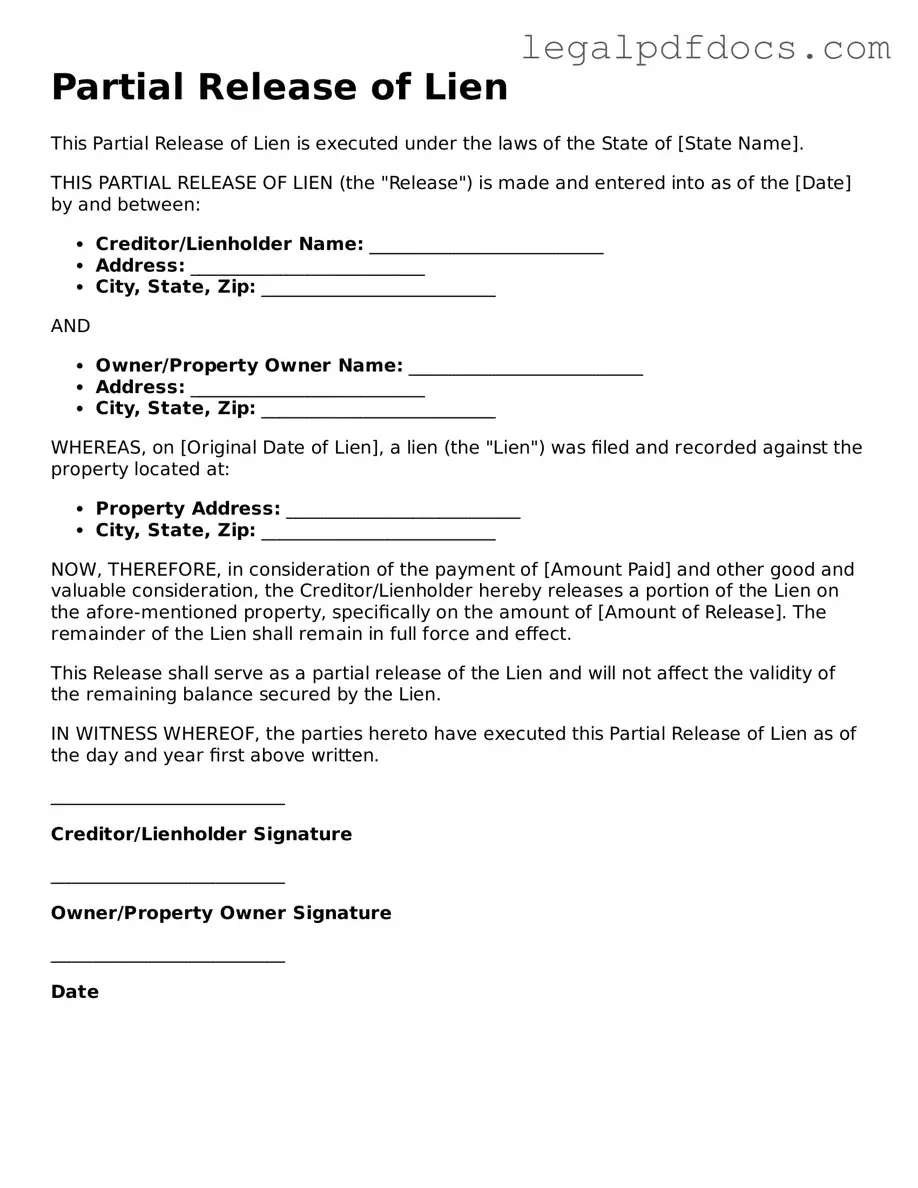Partial Release of Lien Template
The Partial Release of Lien form is a legal document that allows a property owner to remove a lien on a portion of their property. This form is essential for those who have settled a debt related to construction or improvements, ensuring that the lien does not affect the entire property. To take the next step in managing your property rights, fill out the form by clicking the button below.
Open Partial Release of Lien Editor Here
